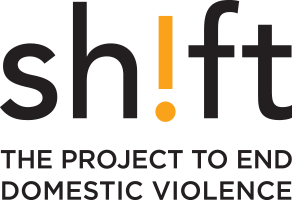Why use a fatherhood approach?
Fatherhood Approach
Simply put, fatherhood is the best time to engage men. An entry point like fatherhood increases the potential for men to be involved in healthy, gender-equitable relationships and increases the likelihood that they will be nonviolent and nurturing.
Some researchers suggest that it is due to the increased awareness that men achieve when reflecting on how inequality will impact their own children. Others suggest that a parent has more contact and opportunities for interventions delivered through public systems, like the health and school sectors.
A fatherhood approach includes a range of different programs and initiatives that aim to increase positive involvement of fathers in their children’s lives. This includes things like taking an active role in caring for their child’s social, emotional, cognitive, and physical health and having a respectful relationship with the child’s mother or co-parent.
The fatherhood approach includes all males in caregiving roles—biological and adoptive parents, stepparents, transgender fathers, father figures, and any other males serving a parenting function.
Why is fatherhood key for engaging men?
The evidence is overwhelmingly clear that promoting positive fatherhood involvement can prevent cycles of domestic violence, advance gender equality, and reinforce healthier masculinity norms.
Children with engaged fathers have higher emotional, cognitive, and social well-being, are less likely to use violence against female partners in adulthood and are more likely to exhibit nurturing, gender-equitable behaviours if/when they themselves become fathers.
Unfortunately, while a fatherhood approach has the potential to be transformative for gender equality and violence prevention, it remains highly underutilized in Canada.
What are the most promising ways to use a fatherhood approach?
First of all, it’s important to start early because fatherhood involvement that starts earlier in a child’s life is more likely to be sustained. We should begin engaging fathers during pregnancy and then continue to leverage places where fathers naturally have the potential to be involved.
We need more government legislation and policies that support father involvement, e.g., mandating fully paid, non-transferable paternity leave for at least three months.
We also need to encourage more men to become involved in care work, including unpaid domestic work and other caregiving roles like nursing, childcare, and teaching. Research shows that societies where men carry a more equal portion of care work have less violence, better mental health, and greater economic equality through women’s increased labour force participation.
It’s also really important to notice the ways our sector might not always be that welcoming to men. We recommend that service providers looking to engage men conduct father-friendly organizational assessments to ensure readiness to provide services to fathers and father figures.
What is an example of putting a fatherhood approach into practice?
Catholic Family Service of Calgary, Alberta, launched the Fathers Moving Forward program in September 2015. Fathers Moving Forward targets biological fathers-to-be between the ages of 16-26.
The Fathers Moving Forward program utilizes a group format with participants completing 12 sessions on topics that include: support skills, stress management and reduction, de-escalating conflict, problem-solving, acceptance skills, and family planning. Sessions use a combination of individual and group education, coupled with experiential learning and skill-building.
As a result of this work, Catholic Family Service also identified and addressed organizational structural and cultural factors that limited father engagement across the organization. This included enhancing the physical environment at their organization by making fathers more apparent in the imagery, décor, and language, working with staff to reflect on potential biases in their practice, developing evaluation strategies specific to fathers, and hiring more male staff.
What else should I know before implementing fatherhood approaches?
There are many barriers that make it challenging for some fathers, particularly those who are disadvantaged, to become more involved with their children. Understanding and seeking to address these structural barriers should go hand in hand with supporting positive father involvement.
Much of the traditional language of parenting (e.g., “mothers” and “fathers”) is exclusionary and reinforces a binary. Gender and sexually diverse fathers are largely absent from the research, and gendered discourses on parenting are a challenge to promoting positive fatherhood involvement.
Read more about fatherhood approaches:
In addition to the Shift research reports listed earlier, the following resources offer further information on fatherhood approaches:
- Elizabeth Dozois, Lana Wells, Deinera Exner-Cortens, Elena Esina – No Man Left Behind
- MenCare – A global fatherhood campaign
- State of the World’s Fathers – Global report on men’s involvement in parenting and care work
- Caring Dads – Group intervention program for men involved in family violence
Read more about other approaches:


